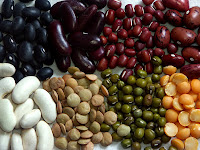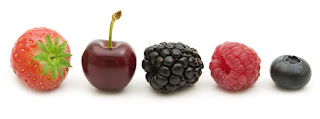Answer: BUSTED!
If you have a child attending public school, you have probably heard that school lunches have changed. Starting this year, new rules for school lunches went into effect as a result of the Healthy, Hunger-Free Kids Act of 2010. The last update to the lunch standards was more than fifteen years ago.
Why the changes? About 17 percent of U.S. children and adolescents aged 2-19 years (which is 12.5 million children) are obese. This is almost triple the numbers since 1980 according to the Centers for Disease Control and Prevention. The latest statistics show that 29 percent of Missouri high school students are overweight or obese compared with 28 percent nationwide. Since 2005, Missouri has moved from ninth to eighth in the country in obesity rates among high school students, as found in a survey by the Centers for Disease Control and Prevention. In recent years, school meals have been blamed for helping contribute to childhood obesity. How much of this is true is still debatable, but almost everyone agrees something needs to be done to address the problem of childhood obesity. Since the National School Lunch Program is funded by taxpayer dollars it was felt that we should be spending our money on healthy foods.
Where did the new rules come from? The U.S. Department of Agriculture developed the requirements for the new school food program based on the 2010 Dietary Guidelines and recommendations from scientific experts at the Institute of Medicine. Some of the notable changes are:
- Student meals will have 1/2 cup of fruit or vegetables to count as a complete meal.
- Meals will have a caloric maximum based on age group.
- There are limits for how much meat and meat alternatives and grains may be offered.
For more information you can go to the website:
http://www.fns.usda.gov/cnd/whatsnew.htm.
What are some concerns about the new rules? Complaints about the school lunch rules have been numerous and have included a humorous parody posted on YouTube. These complaints have ranged from not getting enough food to eat, not liking the food offered and being too expensive for school foodservice to manage. On the positive side, the new school lunch rules have encouraged school districts to team up with local chefs to upgrade their menus. The new rules have encouraged the food industry to offer more healthful, tasteful foods. Additionally, the new rules have introduced new healthful food choices to students that have not had that opportunity in the past. In fact, some school districts have reported an increase in meals consumed since the new changes.
What can I do if my child refuses to eat the new school meals? First, ask your child if the problem is with the choice of foods being offered or how the food is prepared. If the problem is with how the food is prepared, contact your school and see if changes can be made. Some school districts have cut back so much on their foodservice that they made need to hire extra help or current workers may need to have more training. If this is the case, there are resources that can help schools. If your child dislikes the food choices of more fruits, vegetables and whole grain products, then you may need to discuss with your child the health benefits of eating these foods.
Any time changes are made to something as personal as our food choices, it causes controversy. The new school meal requirements are no exception. While we may not be happy with some of the food choices, let’s not forget what the new requirements want to achieve. That is healthier children.
For more information about nutrition and health, please contact your local University of Missouri Extension office.
Contributor: Jim Meyer, Nutrition and Health Education Specialist, Ralls County, University of Missouri Extension, MeyerJE@missouri.edu





































